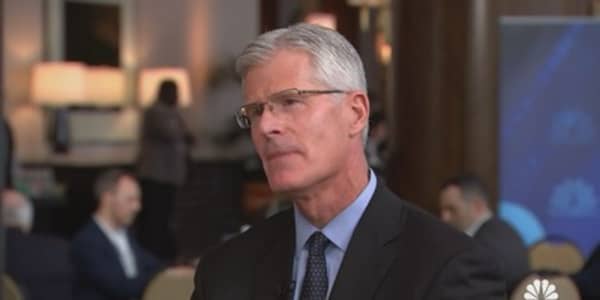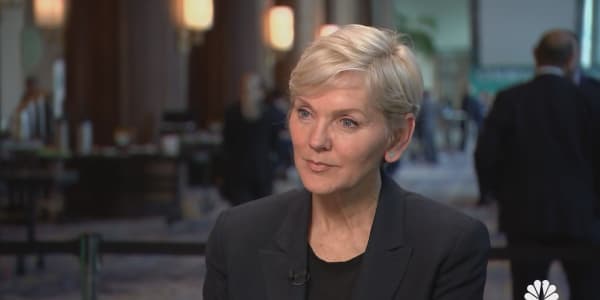The Green New Deal has sparked a timely impassioned national conversation on the imperative of addressing climate-change risks to our economy, environment and security and the associated needs of disadvantaged communities.
The mission is clear: Action is urgently needed to set and follow high-impact pathways to a low-carbon future. We must, however, strive for a broader public consensus that respects local differences and allows all citizens equal opportunity to build a prosperous, fair, safe and secure low-carbon future.
We should first dispel any question about the gravity of addressing climate change. The accelerated pace of change is significantly stressing the world's natural, social and economic systems. We are already paying the price — extreme weather, forest fires, drought, sea-level rise and coastal storm intensity are all high-cost leading indicators.
The price tag for inaction promises to get much higher, and the transformation to a low-carbon energy will inevitably stretch to mid-century and beyond. Those who can least afford it — the poorest Americans and the world's developing countries — will be economically hit worst and first and continue to pay the steepest price unless the rate of investment and innovation is accelerated and extended into all parts of our country.
The need for urgency and the disparate impacts of inaction underscores the dangers of magical thinking at either extreme. Climate deniers, as well as those with demonstrably impractical, short-term, feel-good solutions are moving us sideways when forward motion is essential.
The urgent need to act now on climate requires focus and prioritization. It is time to do the hard work of forging a broadly acceptable and practical plan to transform the energy system. A wise and just transition to a low-carbon economy, moving as fast as is technically and socially possible, must minimize stranded physical assets as well as stranded workers and communities. It will be based on practicality, not ideology. In other words, it had to be a Green REAL Deal to achieve real results.
A vision of a low-carbon future
So what are the features of a Green Real Deal? Increased energy efficiency across all economic sectors, a very low-carbon electricity system and the electrification of buildings, transportation and industry to the extent that is practical are key. All of this is happening, and the pace must be quickened through policy and markets.
Innovation that has dramatically reduced the cost of solar and wind energy is a big part of the story. But it is also a fact that much of the electricity decarbonization has taken because of the natural gas revolution that has reduced coal use. Furthermore, the ability of natural gas to respond to the variability of solar and wind is critical for maintaining a reliable and resilient system.
It is time to do the hard work of forging a broadly acceptable and practical plan to transform the energy system.
Batteries are now entering the electricity system to take up some of the role of natural gas, but this will address storage needs over hours, not weeks or even seasons. Systems-level approaches are fundamental to accelerating the pace of development.
These are just examples to indicate that outcomes derived from innovation are a much better bet than prescriptions based on someone's preferred technologies. For electricity this means looking hard at advanced nuclear technologies and the capture, storage and use of carbon dioxide, as well as renewables. Indeed, this might eventually include direct carbon removal from the air, a prohibitively expensive proposition today in its very early stages of R&D.
Decarbonization of buildings, heavy-duty vehicles and aircraft, industry and agriculture is more complicated, and emissions from these sectors add up to a lot more than those from electricity. Options such as electrification, hydrogen, renewable gas and carbon dioxide utilization become much less costly. Business-model innovation will be needed in parallel with technology innovation, both of which must be unleashed.
Another key feature of a Green Real Deal is the need to fully accommodate regional differences in climate solutions. Low carbon solutions will look very different in various parts of the United States and, for that matter, in different countries with different climates. Not only do we need to up the ante for an innovation agenda, we also should grow regional innovation ecosystems that will develop tailored options. This includes recognizing the important urban-rural differences that often divide our politics.
In 1935, President Franklin Roosevelt established the Rural Electrification Administration as part of the New Deal, both to create infrastructure jobs and to bring electricity to rural areas as a matter of fairness and opportunity. A similar push on rural telephone connection after World War II, supported by Federal loans, provides a great example of technology, business and policy uniting local communities in a broad effort to overcome a national challenge. The crisis of the Great Depression and the capacity of presidential leadership came together to move the needle to the lasting benefit of our country.
Today we face the "slow-motion train wreck" of climate change, but without the presidential leadership that enabled the original New Deal. This present circumstance only elevates the importance of acting now in Congress, in states and cities and in civil society to develop a practical Green Real Deal that will provide the political coalitions needed for an inclusive societal push to accelerated climate action.
Ernest Moniz served as Secretary of Energy in the Barack Obama administration. Andy Karsner served as Assistant Secretary for Energy Efficiency and Renewable Energy in the George W. Bush administration. They collaborate on the Roosevelt Project at MIT.




